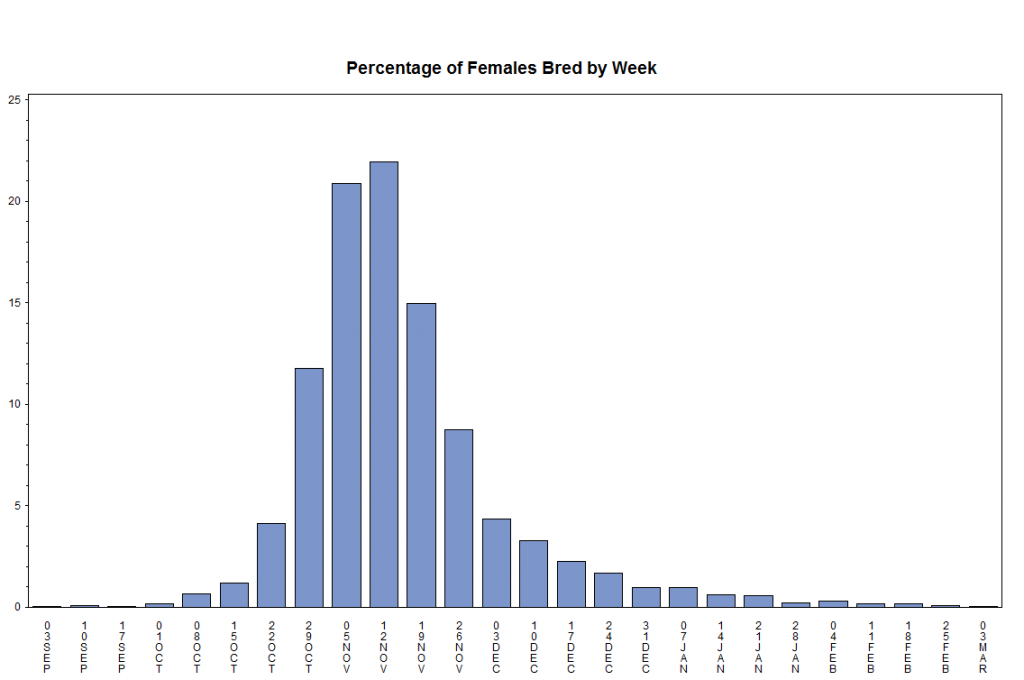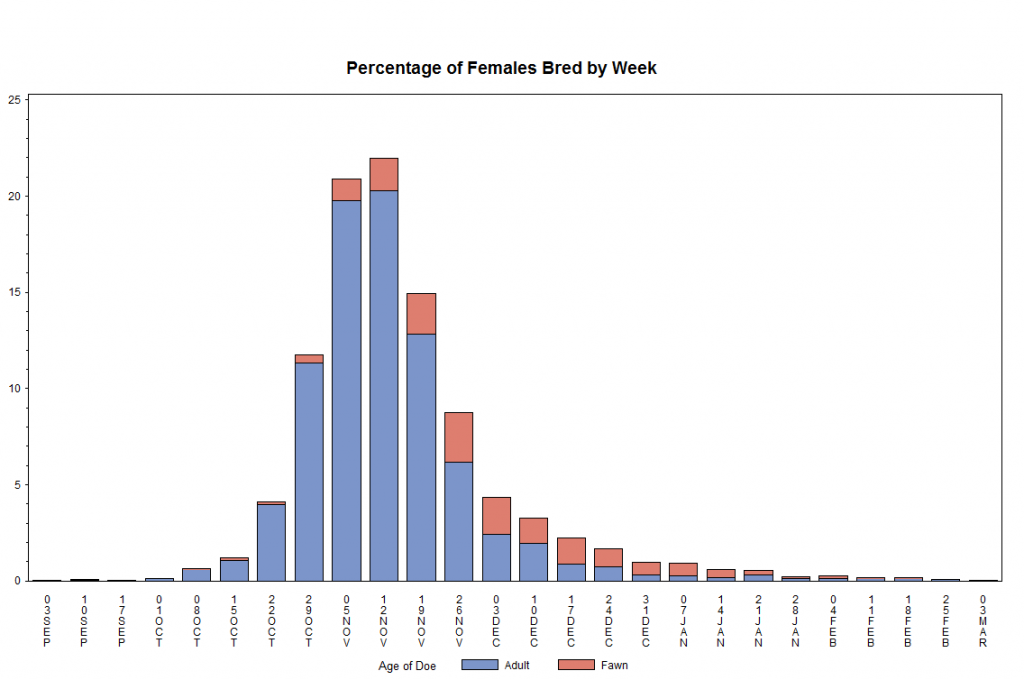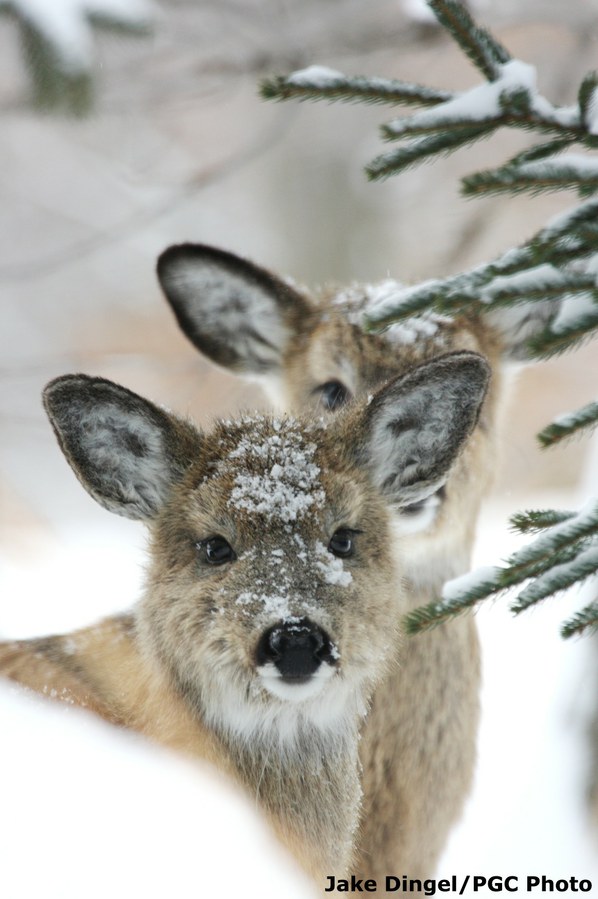Timing of the rut in Pennsylvania is driven by changes in daylength. We already showed you the timing does not vary much from year to year.
But fawns, on average, breed about 2 weeks later than adult females. Why?
The hormone melatonin is produced by the pineal gland (a small gland located near the brain) during periods of darkness. As the days get shorter in autumn more melatonin is produced. Once melatonin concentrations reach a critical level, the onset of estrus is triggered (through another complicated set of hormones) and females become receptive to males for mating.
If females are not bred when they they first come into estrus, then they will cycle and 21-30 days later they get a second chance. Or a third chance 42-60 days later. And so on.
The graph below shows when breeding occurs in Pennsylvania by weekly intervals. The dates on the horizontal axis represent mid-week.
Notice that by the last week in October only about 20% of females have been bred – and more than 10% were bred in the last week alone. That would explain the increased home range size of males we observed in late October.
But suddenly in the first two weeks of November over 40% of females were bred. By the end of November over 85% of females have been bred.

What we see is a rapid onset of breeding in late October. But notice how breeding trails off into December, January, and all the way into March. Why?
It turns out there are two reasons. First, as I already mentioned, if a doe does not get bred the first time she may cycle and breed 21-30, 42-60, … days later.
The other reason is because of fawns. A fawn has to balance energy needs of growth with the demands of producing offspring – a fawn is only going to breed if she has enough body mass and fat reserves. Some fawns may reach that critical size, but the result is they breed later than adults.
Check out this graph where we identify the percentage of does breeding by age.

Notice that most fawns are bred in late November and December. By December most of the breeding consists of fawns.
But overall, relatively few fawns breed at all.
In fact, in northern Pennsylvania (north of Interstate 80), almost no fawns get pregnant. For 1999-2006 the PA Game Commission checked over 3,500 road-killed females and a total of 50 pregnant fawns were discovered in Wildlife Management Units 1B, 2F, 2H, 2G, 3A, 3B, 3C, and 3D. Over half of those 50 came from Wildlife Management Unit 1B (an area with productive Great Lakes soils).
Over the 8-year period, no pregnant fawns were ever found in units 2H and 2G, which has some of the poorest deer habitat in Pennsylvania.
So is the fawn in the photo pregnant? Probably not. But if she is, you know she was probably bred in late November or December.
Our next post will share some videos of deer movements of bucks during the peak of the rut. And now that you know something about the rut in Pennsylvania, what you will see will make a lot more sense. Stay tuned!
If you would like to receive email alerts of new blog posts, subscribe here.
And Follow us on Twitter @WTDresearch
